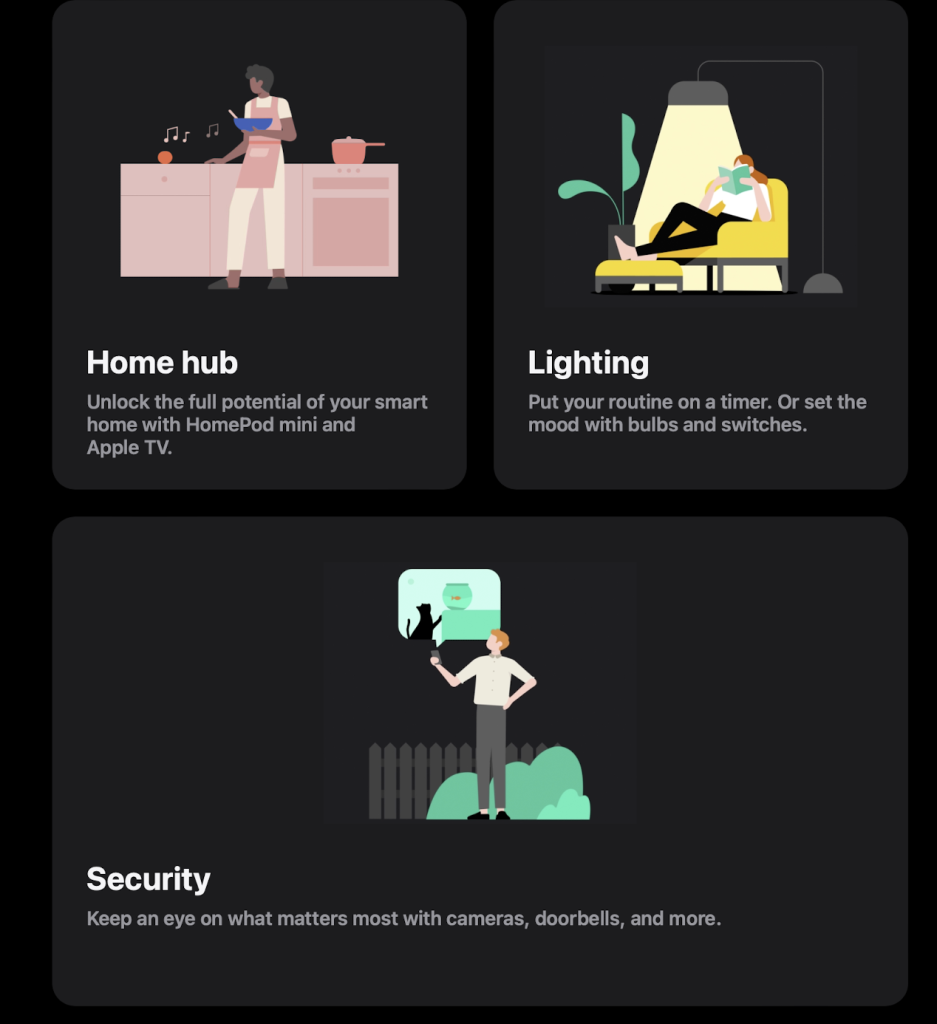The Apple Home App creates a centralized location to control all the smart home devices present in your home. It has features grouped by location (entry, kitchen, etc) so a user can easily perform the desired action using any of their Apple devices.
The application is designed to be a convenient way for users to do tasks around their home, but also greatly helps people who have disabilities by reducing the level of physical labor required to do tasks around the home.
The Home App can be considered an accessible product because it can help people with a physical disability, people who are blind or have low vision, as well as people who are deaf or hard of hearing.
How Does it Work?
The Home App can be used to control compatible smart home devices – including security cameras, lighting, door locks, blinds, etc. Once the compatible device is purchased and installed, the Home App can act as a remote control (as well as with voice Activation through Siri) to perform the actions that the individual smart devices are capable of. The Home App also allows for users to create “Scenes” i.e. a set of commands that run in a sequence. For example, a user who is entering their home can speak a command like “Hey Siri, I’m home”, which could unlock the front entrance, turn on the living room lights, and open the blinds.

The app does well in the categories of utility, usability, accessibility, desirability, and compatibility.
- It can help people with disabilities have greater independence by giving them greater control over their home, and it can be used either through the application or by giving verbal instructions through Siri
- It is easy and convenient to use – the centralization of control gets rid of needing multiple remotes or other devices, and being able to access the app through both touch and voice makes it versatile
- It is also convenient to set up – compatible accessories just need to be scanned to be controlled through the Home App
- Due to Apple’s in-built accessibility features, the app and commands that a user can give are highly customizable. This makes it suitable for people with a wide range of needs and ability
- The app is designed well and aesthetically pleasing
- It can be integrated with many different smart home tools, which further expands its utility
On the other hand, it can do better in terms of affordability. The compatible products on average cost over $100 each. Considering that each product only has a limited number of capabilities, this cost continues to add up. To have the best utility possible, a user with a disability might have to spend a lot of money to buy many different accessories.
Conclusion
The Home App, while not expressly assistive technology, can be considered as such underneath the functional model of disability as well as the social model of disability. The Home App uses different pieces of technology to create an easier way to manage a user’s household. In doing so, it also provides practical solutions for people with disabilities to more easily manage their homes and change their environment in a way that removes barriers to their functions or independence.
References:
